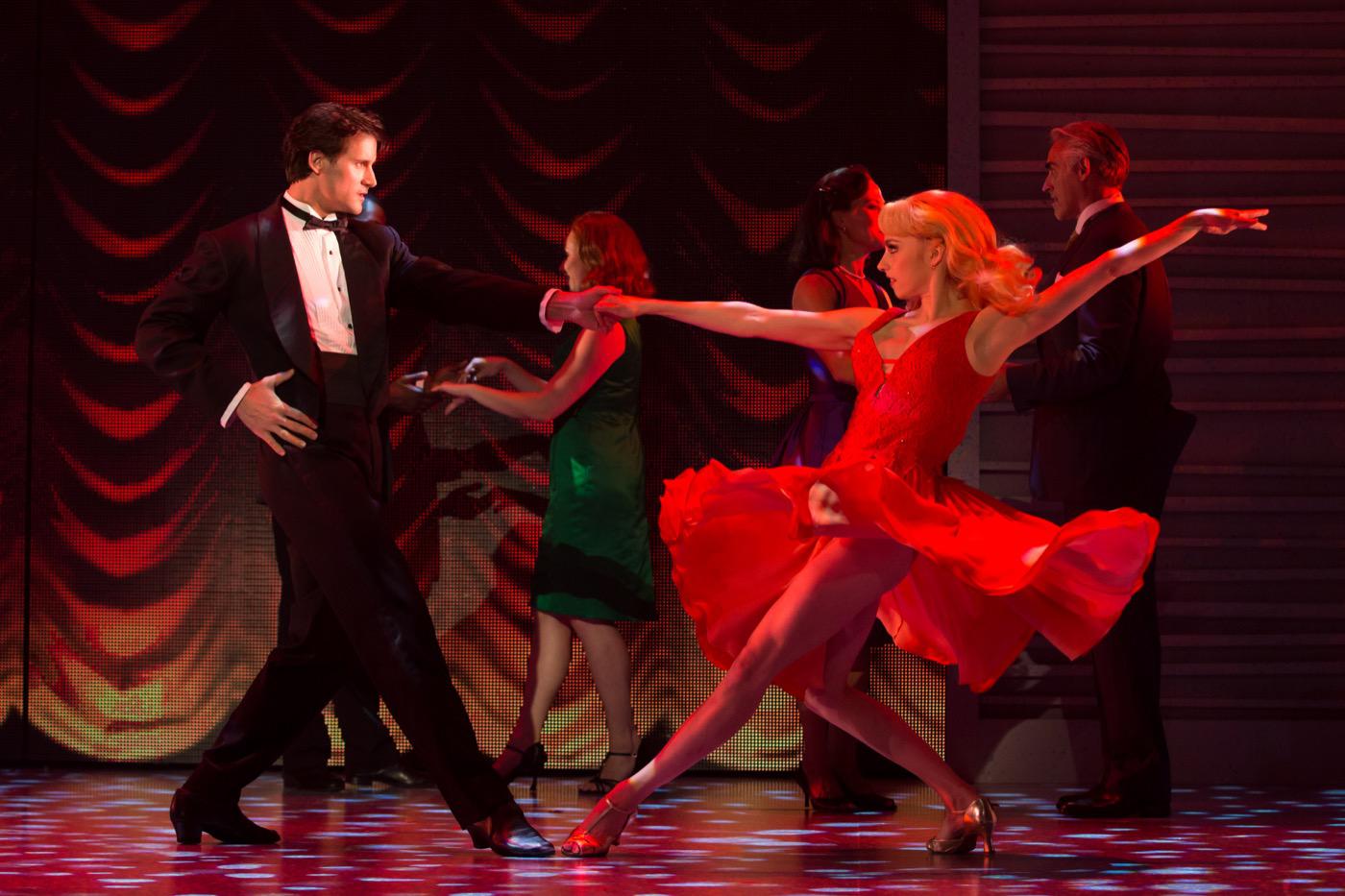You Have to Feel the Music
An Obsession with Dirty Dancing
By Libby Ryan

I’ve seen Dirty Dancing more times than I can count. I know it by heart—every quotable line and each note of the iconic soundtrack. As a thirteen-year-old girl with a crush on dancing-era Patrick Swayze, I desperately wanted to live the story. I fantasized about learning to ballroom dance. I wished my family would drag me off to a resort in the Catskills where we’d all learn to foxtrot. They never did.
But on a Saturday in mid-October, I got the chance to be breathtakingly close to the action. Dirty Dancing: The Classic Story Onstage performed on the Orpheum stage for two weeks, complete with all the infamous watermelon-carrying moments.
Jillian Mueller played the role of Baby, bravely tackling the challenge of being a professional performer and pretending to have no sense of rhythm. Taking on Swayze’s heartthrob role of Johnny Castle was Samuel Pergande. Like Swayze, he had technical ballet training (American Ballet Theater, Joffrey, Bolshoi—the man’s done them all) and his partnering was flawless.
The staging mimicked the movie in nearly exact detail. The sets, choreography, the dialogue, and the costumes were all precisely as they were in the 1987 surprise hit movie. There was one main difference: the soundtrack was partly sung by show-stopping vocalists Jennlee Shallow and Doug Carpenter. Shallow sang the adorable “Yes!” to thunderous applause, followed by Carpenter’s heartbreakingly beautiful “In the Still of the Night.”
Jenny Winton played Penny, Johnny’s dance partner and fellow instructor. Although her dancing was impressive, she lacked the earnestness of Cynthia Rhodes in the original movie, whose love for dance shone through the nuanced supporting character role. Similar to many of the dancers, Winton struggled with the deeper elements of ballroom. Connection in particular was problematic.
When Patrick Swayze danced with any partner in Dirty Dancing, he moved with a graceful intensity that blended his ballet training with ballroom techniques. To be fair, it is perhaps easier for a classically trained man to transition into leading. The role of a man in a ballet pas de deux is the same as a man’s in ballroom: show off the girl. However, a ballerina thrown into ballroom must learn to follow.
But truly, the technique was less important than the overall feeling. Only someone who had exposure to ballroom would ever pick up on those minute details, and the majority of the audience could not tell a waltz from a cha cha. They were aging professionals who’d loved the movie in the '80s, significant others dragged along to the show, season ticket holders, and girls near my age whose mothers introduced the new generation to Baby’s summer adventures. Yet everyone was mesmerized by the story, singing and dancing unfolding onstage. What is it about Dirty Dancing that inspires a longing to dance in people from different generations and backgrounds?
Before I’d ever even stepped foot into a ballroom dance studio, I’d watched Dirty Dancing enough times for it to be classified as an obsession. I daydreamed about my own Johnny Castle teaching me to mambo. I suppose the signature Swayze sex appeal might be a factor, but more importantly, the dancing held its own lure.
Watching Dirty Dancing, the unspoken interactions between partners developed onstage and onscreen. Steamy romance between Baby and Johnny aside, the dance itself calls to viewers. All the forms of ballroom dancing (and the dance moves deemed too risqué for the main ballroom) have something in common. Once you understand a little bit about the way dancing works, it becomes something more—it’s the way a partnership interprets the music together.
Ballroom dancing, to those initiated into its addicting ways, is about connection. It doesn’t matter whether you dance samba, standard foxtrot, or west coast swing; it all centers on the space between you and your partner. There is a rush that comes from correctly translating the movements of your partner into a seamless dance, wordlessly communicating through the movement of a hand or foot.
I watched one of my favorite scenes unfold on the Orpheum stage and laughed. It was eerily similar to what had played out earlier that day. On the stage, Johnny and Penny shoved Baby into dance position, forcing her into the correct dance frame.
Hours before, I stood in my Latin shoes while my former dance partner Daniel O’Connell and his wife, Rosemary, fixed problems with my body positioning. My head needed to be over my hips and feet. I shouldn’t break my sides. I needed to dance from my center. These were things I might have known before, but after more than six months away from ballroom dancing, my muscle memory had faded. I stood rather unsteadily in my heels while I tried to remember how to cha cha.
I was struggling with syncopated breaks; the quick rotation was difficult for me to manage. I felt rusty and slow. I was thinking too much, so we took a step back and returned to basics. I moved from position to position, finding ways to be in control of my balance. Suddenly, I was dancing again instead of thinking about the steps. Magic.
“The steps aren’t enough,” said Johnny Castle onstage during the first act of the show. “You have to feel the music.”
And there is the secret, the answer to the nearly universal adoration for a low-budget movie made in the late '80s. When you watch Dirty Dancing, you feel the music. You want to jump up and dance to the soundtrack, joining in the tempting rhythms unfolding on the stage or screen.
When Johnny pulls Baby out of the corner and onto Kellerman’s stage for one last dance, the audience feels her shyness evaporate. Unlike the stilted version of the routine she performed, this time she dances what she feels to the iconic duet by Bill Medley and Jennifer Warnes.
That final moment is what audiences search for in Dirty Dancing. It is why thirteen-year-old girls yearn for a summer of learning to ballroom dance and is the root of my desire to throw myself into ballroom after discovering the college club during my first weeks on campus. We are all searching for a piece of the dream Dirty Dancing sells.
And I can’t help but say it—I’ve had the time of my life.
